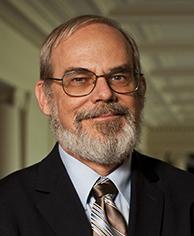Q&A: What Open Learning Means at MIT
W. Eric L. Grimson PhD ’80, Chancellor for Academic Advancement and Interim Vice President for Open Learning

Professor of computer science and Bernard M. Gordon Professor of Medical Engineering, Eric Grimson has taught 20,000 MIT undergraduates, supervised nearly 50 MIT PhD students, and co-taught an MITx course which has reached two million learners worldwide. He is chancellor for academic advancement and interim vice president of MIT Open Learning.
What is MIT Open Learning?
MIT has a mission statement, which in essence says we aim to educate students, create knowledge, and apply that knowledge to the great challenges of the nation and the world. MIT Open Learning is a natural extension of this mission as applied to learning and education. Open Learning offers access to hundreds of free online courses, many of which are taught by MIT faculty, as well as professional boot camps and certificate programs.
Starting years ago with OpenCourseWare and MITx, we aimed to take what we knew about a field and what we knew about how to teach it, and make that knowledge available to motivated students and teachers around the world. Looking inward, we also wanted to think critically about how to apply what we’ve learned to our own classrooms.
For example, a faculty member can be giving a traditional lecture while a TA monitors an online chat, responding to students’ questions in real time. Online lectures can be broken into chunks, interrupted by brief exercises to test students’ mastery of the material, providing both individual feedback to learners and general feedback to instructors on where their teaching hits or misses the mark.
What opportunities do you see for Open Learning to expand this work?
“Planned gifts provide a critical foundation for MIT’s future.”
I would like to see Open Learning put serious energy into three areas. First, we should take advantage of opportunities to better embed Open Learning within MIT itself. The Covid-19 pandemic was a forcing function worldwide for online teaching, to very mixed results. We had a head start in the field, and as a result of our innovations, much of the Institute continues to engage deeply with our office, leveraging our digital learning experts, technical tools and facilities, and staff in great ways. I’d like to see these resources continue to enrich most, if not all, MIT courses.
The second area is K–12. We started our work, understandably, with a focus on college-level materials. But how do we reach children and use what we know about teaching to make better outcomes? Open Learning programs such as RAISE (Responsible AI for Social Empowerment and Education) and J-WEL (Abdul Latif Jameel World Education Lab) are focused on that, and we can do more.
Thirdly, how could we be even more effective in “workforce upskilling”? Open Learning is already doing a lot of work in this space through xPRO online courses, the MIT Horizon library, and industry-specific boot camps. But it’s one of the great challenges of our time—how can people whose jobs are changing adapt and move into different careers? I think MIT should consider how we could help with the transition to work in a more heavily information-based society.
Philanthropy is key to ensuring that MIT stays on the leading edge of knowledge and technological development. How do planned gifts support MIT’s educational mission?
Planned gifts provide a critical foundation for MIT’s future. We don’t know the challenges the future will bring, but we can make some assumptions based on past experience about what we’ll need to tackle them.
First, resources will always be needed to jump-start new ideas. Unrestricted funds provide MIT’s leaders with flexible “start-up capital” to power new initiatives. Second, we know that we will need cutting-edge facilities and equipment in state-of-the-art laboratories to make new discoveries and prove new technologies.
Finally, and most importantly, we will need talented generations of students to tackle tough problems. MIT is fortunate to have supporters far and wide who understand the importance of the scientific breakthroughs that happen here. We find common purpose in our vision for a better world.
